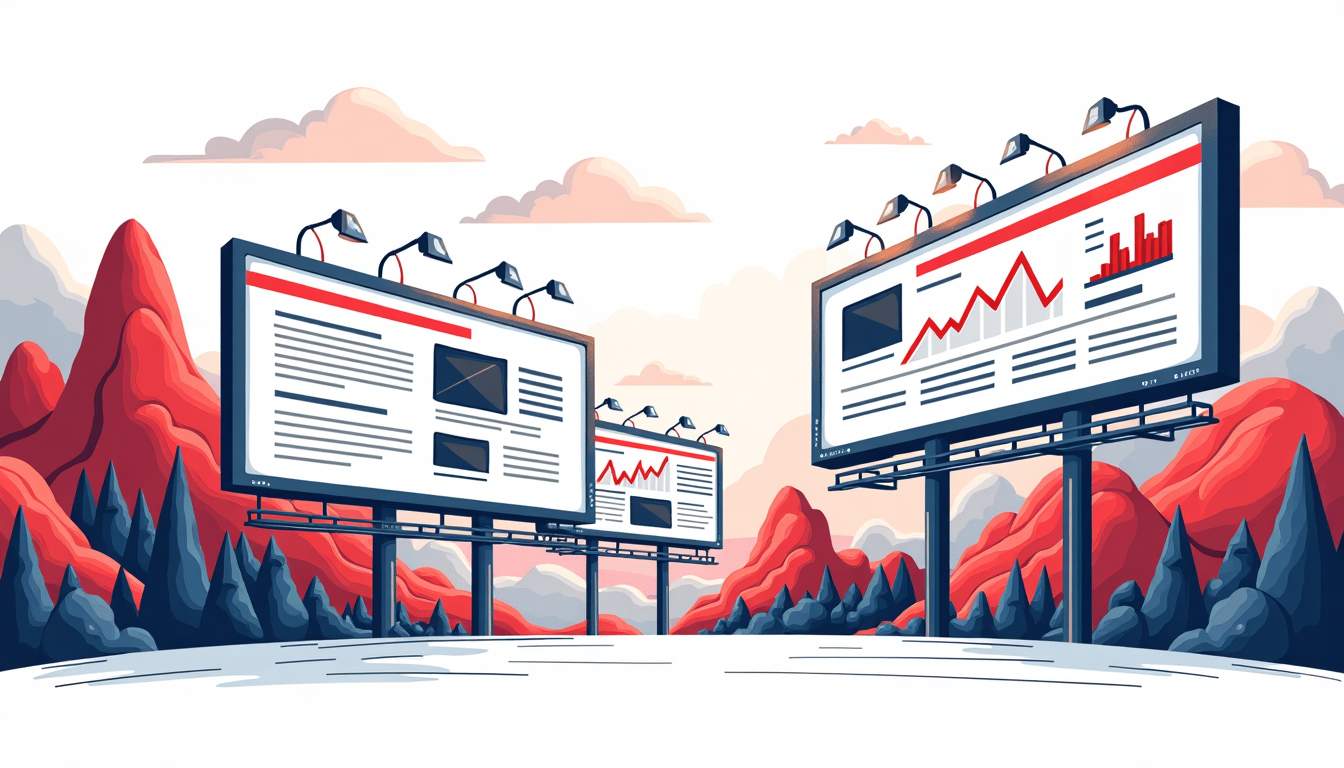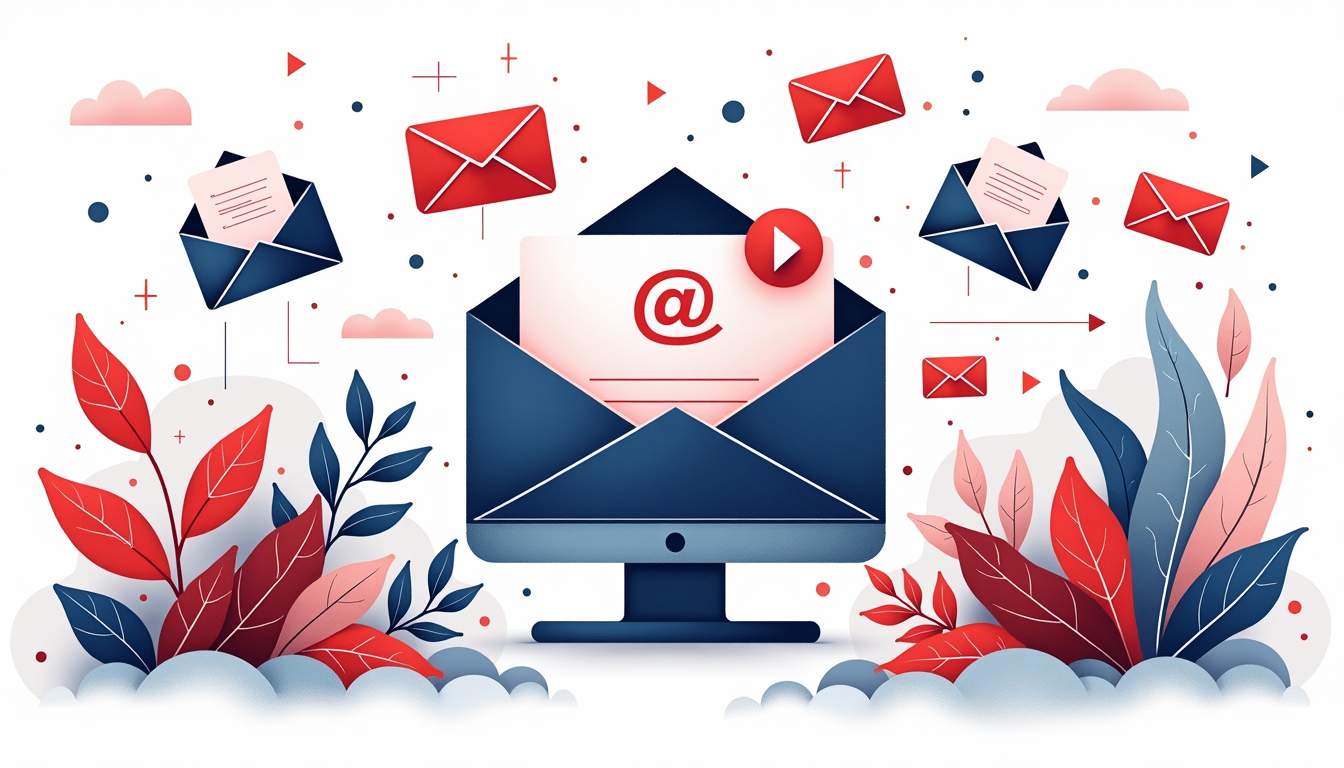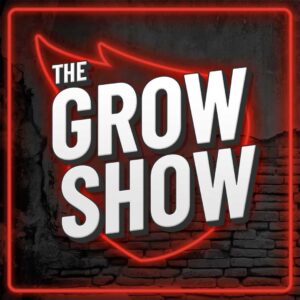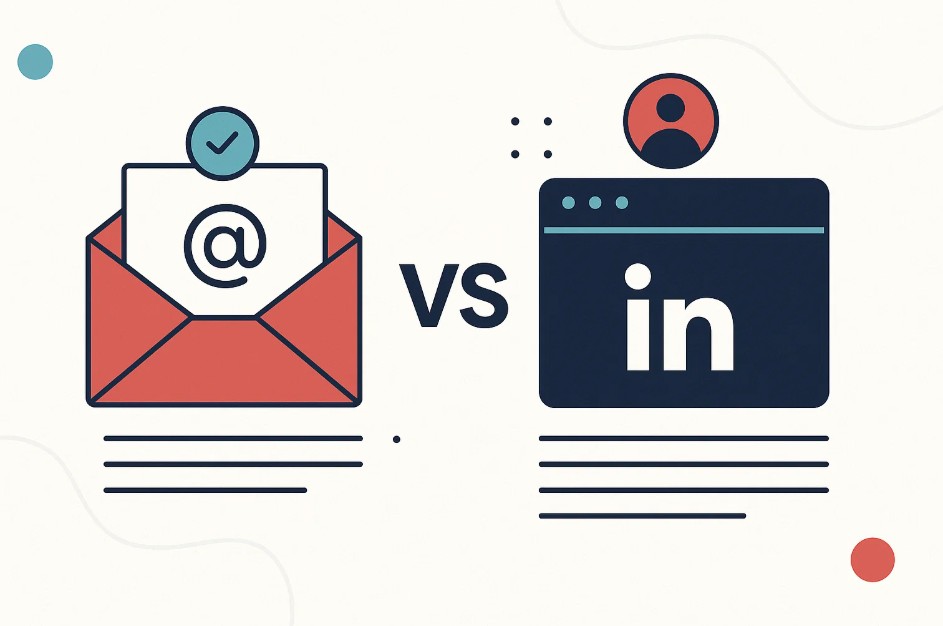Launching a website is just the beginning of your digital journey. The real challenge lies in driving targeted traffic and converting visitors into loyal customers. With millions of websites competing for attention, effective advertising is essential to stand out and grow your online presence. But how can you advertise your website efficiently and sustainably in today’s fast-evolving digital landscape?
This comprehensive guide breaks down proven strategies, backed by data and real-world examples, to help you advertise your website with confidence and measurable results. Whether you’re a startup, small business, or established brand, understanding these tactics will empower you to build meaningful connections with your audience and maximize your return on investment.
Contents
- 1 Understanding Your Audience: The Foundation of Effective Advertising
- 2 Search Engine Advertising: Capturing High-Intent Traffic
- 3 Social Media Advertising: Building Brand Awareness and Engagement
- 4 Content Marketing and SEO: Driving Organic Traffic Over Time
- 5 Email Marketing: Nurturing Leads and Driving Repeat Visits
- 6 Affiliate and Influencer Marketing: Leveraging Third-Party Trust
- 7 Measuring and Optimizing Your Advertising Efforts
- 8 Final Thoughts: A Multi-Channel Approach for Maximum Impact
- 9 Take Your Website Advertising to the Next Level with Abstrakt Marketing Group
Understanding Your Audience: The Foundation of Effective Advertising
Before diving into advertising channels and campaigns, it’s critical to understand who your ideal visitors are. Advertising without a clear audience profile is like casting a net into the ocean without knowing what you want to catch.
Start by defining your target audience’s demographics, interests, online behavior, and pain points. Tools like Google Analytics, Facebook Audience Insights, and surveys can provide valuable data. For instance, if your website offers eco-friendly products, your audience might skew towards environmentally conscious millennials and Gen Z consumers who prioritize sustainability. Additionally, consider the psychographics of your audience, such as their values, lifestyle choices, and purchasing motivations. This deeper understanding can help you craft messages that not only attract attention but also foster a genuine connection with potential customers.
Knowing your audience ensures your advertising messages resonate and your budget is spent wisely. According to a survey by HubSpot, personalized ads can increase conversion rates by up to 202%. This underscores the importance of tailoring your campaigns to the right people. Moreover, understanding your audience can lead to improved customer loyalty and retention. When consumers feel that a brand truly understands their needs and preferences, they are more likely to engage with it repeatedly, creating a cycle of trust and advocacy.
Creating Buyer Personas
Buyer personas are semi-fictional representations of your ideal customers. They help you visualize your audience’s needs and motivations, enabling targeted messaging. A well-crafted persona includes:
- Age, gender, location
- Job title and income level
- Goals, challenges, and pain points
- Preferred online platforms and content types
For example, a buyer persona for a fitness coaching website might be “Sarah, a 28-year-old marketing professional who wants to lose weight but struggles with motivation and time management.” This clarity guides your advertising tone, visuals, and channel selection. Additionally, consider creating multiple personas to capture the diversity within your audience. Each persona can represent different segments, such as budget-conscious consumers, premium buyers, or those seeking specific solutions, allowing for more nuanced marketing strategies that cater to varied needs.
Furthermore, regularly updating your buyer personas is essential as market dynamics and consumer preferences evolve. Engaging with your audience through social media, feedback forms, and community discussions can provide fresh insights that refine your personas. By keeping your personas current, you can ensure that your advertising strategies remain relevant and effective, ultimately leading to higher engagement rates and better overall performance in your campaigns.
Search Engine Advertising: Capturing High-Intent Traffic
Search engine advertising, primarily through Google Ads, remains one of the most effective ways to drive targeted traffic to your website. When users actively search for products or services related to your business, paid search ads put your website front and center.
Why Google Ads Works
Google processes over 8.5 billion searches per day, making it the largest search engine globally. Ads appear above organic results, giving you prime visibility. According to WordStream, businesses make an average of $2 in revenue for every $1 spent on Google Ads, highlighting its profitability.
Search ads are intent-driven, meaning users are already looking for solutions. This makes conversion rates higher compared to other advertising forms. Additionally, the ability to target specific demographics, locations, and even times of day allows businesses to tailor their advertising efforts to reach the most relevant audience, maximizing the potential for engagement and sales.
Best Practices for Search Ads
- Keyword Research: Use tools like Google Keyword Planner or SEMrush to identify relevant, high-intent keywords. Focus on long-tail keywords to reduce competition and cost.
- Compelling Ad Copy: Highlight unique selling points and include clear calls-to-action (CTAs) such as “Buy Now” or “Get a Free Quote.”
- Landing Pages: Ensure your ads lead to optimized landing pages that match the search intent and encourage conversions.
- Use Ad Extensions: Add site links, call buttons, and location info to increase ad real estate and improve click-through rates.
- Monitor and Optimize: Regularly analyze performance metrics like click-through rate (CTR), cost-per-click (CPC), and conversion rate to refine your campaigns.
Moreover, leveraging remarketing strategies can significantly enhance the effectiveness of your search ads. By targeting users who have previously visited your site, you can remind them of your offerings and encourage them to complete their purchase. This approach not only increases brand recall but also taps into the existing interest of potential customers, making it a cost-effective way to boost conversions.
Another essential aspect to consider is the integration of ad campaigns with other marketing channels. For instance, combining search engine advertising with social media campaigns can create a cohesive brand message and broaden your reach. By utilizing retargeting ads on platforms like Facebook or Instagram, you can reinforce your presence and guide users back to your website, ultimately enhancing the overall effectiveness of your marketing strategy.
Social Media Advertising: Building Brand Awareness and Engagement
Social media platforms offer unparalleled opportunities to connect with your audience on a personal level. Advertising on platforms like Facebook, Instagram, LinkedIn, and TikTok allows you to target users based on interests, behaviors, and demographics. This level of customization not only enhances the effectiveness of your campaigns but also ensures that your message resonates with the right people, driving engagement and fostering a sense of community around your brand.
Choosing the Right Platform
Each social network caters to different audiences and content types. For example:
- Facebook & Instagram: Ideal for B2C brands targeting broad demographics with visual content.
- LinkedIn: Best for B2B companies focusing on professionals and decision-makers.
- TikTok: Great for reaching younger audiences with creative, short-form videos.
Understanding where your audience spends time is key to maximizing ad impact. Additionally, it’s essential to stay updated on the latest trends and features of each platform, as they frequently evolve to enhance user experience. For instance, Instagram has recently expanded its shopping features, allowing brands to sell products directly through their posts and stories, which can significantly streamline the customer journey and boost conversion rates.
Effective Social Media Ad Strategies
Social media ads thrive on creativity and relevance. Here are some tactics that yield results:
- Use Video Content: Videos generate 1200% more shares than text and images combined, making them highly engaging.
- Leverage Retargeting: Re-engage visitors who have interacted with your website or social profiles but haven’t converted yet.
- Experiment with Ad Formats: Carousel ads, stories, and interactive polls can capture attention and encourage interaction.
- Incorporate User-Generated Content: Authentic content from customers builds trust and social proof.
- Set Clear Objectives: Whether it’s website traffic, lead generation, or sales, define your campaign goals upfront.
Moreover, utilizing analytics tools provided by these platforms can help you track the performance of your ads in real-time. By analyzing metrics such as engagement rates, click-through rates, and conversion rates, you can refine your strategies and make data-driven decisions. A/B testing different ad creatives and targeting options can also provide insights into what resonates best with your audience, allowing you to optimize your campaigns for maximum effectiveness. Additionally, fostering a two-way conversation with your audience through comments and direct messages can enhance brand loyalty and create a more engaged community around your business.
Content Marketing and SEO: Driving Organic Traffic Over Time
While paid advertising delivers immediate results, content marketing combined with search engine optimization (SEO) builds sustainable, long-term traffic. Creating valuable, relevant content attracts visitors organically and establishes your website as an authority.

Why Content Marketing Matters
According to Demand Metric, content marketing costs 62% less than traditional marketing and generates about three times as many leads. High-quality blog posts, videos, infographics, and guides answer your audience’s questions and solve their problems, naturally driving traffic. Furthermore, content marketing fosters a deeper connection with your audience, allowing brands to communicate their values and mission effectively. This emotional engagement not only enhances brand loyalty but also encourages users to share content, amplifying its reach and impact.
SEO Best Practices to Boost Visibility
Optimizing your website and content for search engines improves your chances of ranking on the first page of Google, where 75% of users never scroll past. Key SEO components include:
- Keyword Optimization: Integrate relevant keywords naturally into titles, headers, and body text.
- Technical SEO: Ensure fast loading speeds, mobile responsiveness, and secure HTTPS protocols.
- Backlink Building: Earn links from reputable websites to boost your domain authority.
- User Experience: Create intuitive navigation and engaging content to reduce bounce rates.
- Regular Updates: Keep content fresh and relevant to maintain rankings.
In addition to these practices, leveraging local SEO strategies can significantly enhance visibility for businesses targeting specific geographic areas. This includes optimizing Google My Business listings, gathering customer reviews, and utilizing location-based keywords. By doing so, businesses can attract local customers who are actively searching for their products or services, thereby increasing foot traffic and conversions.
Content Promotion Amplifies Reach
Publishing great content is only half the battle. Promote it through social media, email newsletters, and influencer partnerships to extend its reach. For example, sharing blog posts in niche Facebook groups or LinkedIn communities can attract highly targeted traffic. Additionally, utilizing paid promotions on social media platforms can further enhance visibility, allowing you to reach a broader audience quickly. Collaborating with influencers who resonate with your brand can also provide authentic endorsements, driving their followers to your content and increasing your credibility in the market.
Email Marketing: Nurturing Leads and Driving Repeat Visits
Email marketing remains one of the highest ROI channels, with an average return of $42 for every $1 spent, according to Litmus. It’s a direct line to your audience, allowing personalized communication that builds relationships and drives conversions. This is particularly important in today’s digital landscape, where consumers are bombarded with information and advertisements. A well-crafted email can cut through the noise, making your message stand out and resonate with your audience.

Building an Email List
Start by offering valuable incentives such as exclusive content, discounts, or free trials to encourage visitors to subscribe. Use pop-ups, landing pages, and sign-up forms strategically placed on your website. Additionally, consider leveraging social media platforms to promote your email sign-up forms, as this can help you reach a wider audience. Engaging with your followers on these platforms can create a seamless transition from social interaction to email subscription, enhancing your overall marketing strategy.
Crafting Effective Email Campaigns
Successful email marketing hinges on relevance and timing. Segment your list based on behavior and preferences to send tailored messages. Use compelling subject lines, clear CTAs, and mobile-friendly designs. It’s essential to remember that the average person receives dozens of emails daily, so capturing their attention quickly is crucial. A/B testing different elements of your emails, such as subject lines and content formats, can provide insights into what resonates best with your audience.
Automated drip campaigns can nurture leads by delivering a sequence of emails that educate and guide prospects through the buying journey. These campaigns can be tailored to address specific pain points or interests, ensuring that your audience receives information that is not only relevant but also timely. Furthermore, incorporating user-generated content, such as testimonials or case studies, can enhance credibility and encourage engagement, making your emails even more effective in driving conversions.
Affiliate and Influencer Marketing: Leveraging Third-Party Trust
Affiliate and influencer marketing tap into the power of trusted voices to promote your website. Affiliates earn commissions for driving sales, while influencers use their social clout to introduce your brand to engaged audiences. This symbiotic relationship not only boosts visibility but also enhances credibility, as potential customers are more likely to trust recommendations from individuals they admire or follow.
Affiliate Marketing Advantages
This performance-based model minimizes upfront costs since you pay only for actual results. Platforms like ShareASale or Commission Junction can help you recruit affiliates aligned with your niche. Additionally, affiliates often have established audiences that trust their opinions, which can lead to higher conversion rates compared to traditional advertising methods. By leveraging data analytics, you can track the performance of your affiliates, allowing you to optimize your marketing strategies based on real-time results and insights.
Influencer Marketing Strategies
Collaborate with influencers whose followers match your target audience. Micro-influencers (10,000–100,000 followers) often deliver higher engagement rates and authentic connections. Sponsored posts, product reviews, and giveaways are effective formats. Furthermore, creating long-term partnerships with influencers can foster a deeper brand loyalty, as they become more familiar with your products and can share more nuanced content that resonates with their audience. Engaging influencers to participate in behind-the-scenes content or brand storytelling can also create a more personal connection, making your brand feel more relatable and trustworthy.
Measuring and Optimizing Your Advertising Efforts
Advertising without measurement is guesswork. Use analytics tools such as Google Analytics, Facebook Ads Manager, and email marketing dashboards to track key performance indicators (KPIs) like traffic sources, conversion rates, and cost per acquisition (CPA). Each of these platforms offers unique insights that can help you refine your strategies. For instance, Google Analytics provides detailed demographic data about your audience, allowing you to tailor your messaging to better resonate with them. Meanwhile, Facebook Ads Manager enables you to segment your audience based on their behavior and interests, giving you the ability to create highly targeted campaigns that can drive engagement and conversions.
Regularly analyze this data to identify what’s working and where improvements are needed. A/B testing different ad creatives, landing pages, and targeting options can significantly enhance your campaign performance over time. By systematically testing variations, you can uncover which elements resonate most with your audience. For example, you might find that a particular color scheme or call-to-action phrase leads to higher engagement. Additionally, consider the timing of your ads; running tests at different times of day or week can reveal optimal periods for reaching your target audience.
Key Metrics to Monitor
- Click-Through Rate (CTR): Measures how many people clicked your ad versus how many saw it.
- Conversion Rate: Percentage of visitors who completed a desired action like signing up or purchasing.
- Cost Per Click (CPC) and Cost Per Acquisition (CPA): Help you understand the financial efficiency of your campaigns.
- Return on Ad Spend (ROAS): Calculates the revenue generated for every dollar spent on advertising.
In addition to these metrics, it’s crucial to keep an eye on customer lifetime value (CLV), which helps you understand the long-term profitability of acquiring new customers. By comparing CLV to your CPA, you can determine whether your advertising efforts are sustainable. Moreover, engagement metrics such as bounce rate and time on site can provide further insights into the quality of your traffic. If users are leaving your landing page quickly, it may indicate that your ad messaging does not align with the content they find upon clicking through. This alignment is essential for maintaining a positive user experience and maximizing your advertising ROI.
Final Thoughts: A Multi-Channel Approach for Maximum Impact
Advertising your website is not about choosing a single silver bullet but rather integrating multiple strategies that complement each other. Paid search ads capture immediate demand, social media builds brand affinity, content marketing fuels organic growth, and email nurtures lasting relationships.
By understanding your audience, setting clear goals, and continuously optimizing your efforts based on data, you can create a powerful advertising ecosystem that drives consistent, high-quality traffic to your website. In an ever-competitive digital world, this results-driven, adaptable approach is your key to sustainable success.
Take Your Website Advertising to the Next Level with Abstrakt Marketing Group
Ready to transform your website’s potential into real, measurable growth? Abstrakt Marketing Group specializes in elevating B2B companies through strategic lead generation and targeted advertising solutions. Let us help you harness the power of the strategies discussed in this guide to not only drive traffic but also generate high-quality leads that fuel business success. Learn More about how our commitment to your success can lead to exceptional results for your business.

Madison Hendrix
Madison has worked in SEO and content writing at Abstrakt for over 5 years and has become a certified lead generation expert through her hours upon hours of research to identify the best possible strategies for companies to grow within our niche industry target audiences. An early adopter of AIO (A.I. Optimization) with many organic search accolades - she brings a unique level of expertise to Abstrakt providing helpful info to all of our core audiences.
- Madison Hendrix
- Madison Hendrix
- Madison Hendrix
- Madison Hendrix





